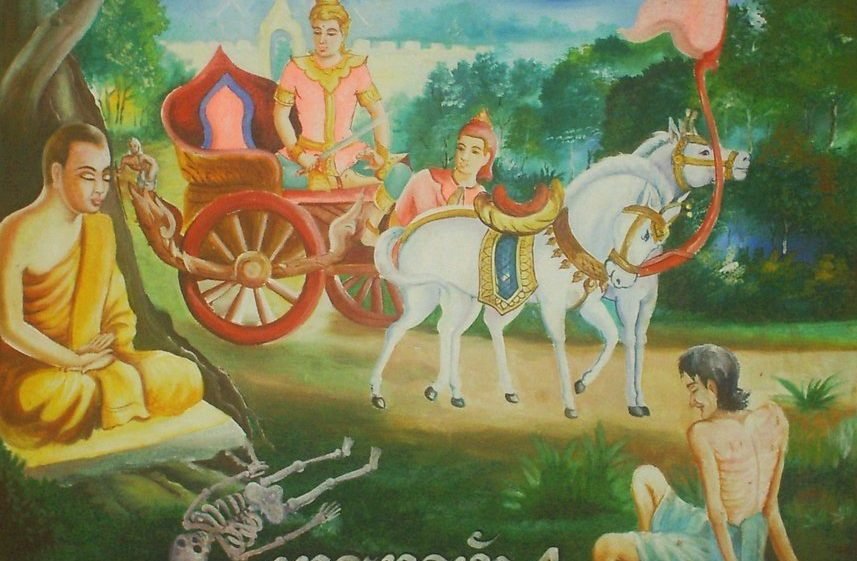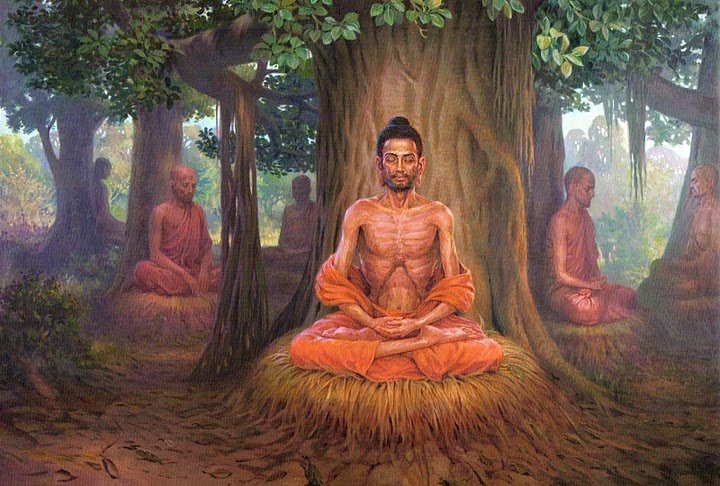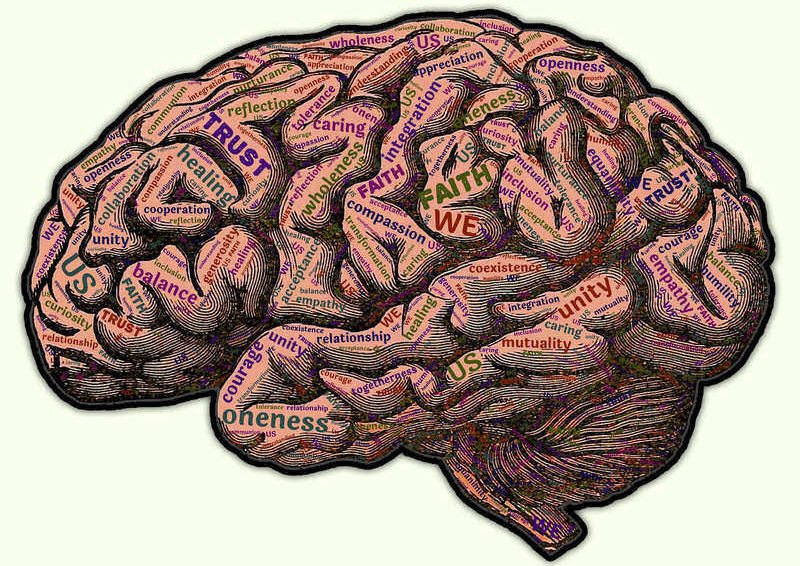(There are many branches of Buddhism, both as a religion and as a philosophy. In this post, we will consider Buddhism as a philosophy.)
Most people would assume Stoicism and Buddhism are entirely different philosophies. After all, one was created in ancient Greece, while the other was founded in ancient India.
But despite the two philosophies seemingly being drastically different, they have a lot in common.
So let’s take a look at some surprisingly similar aspects between Stoicism and Buddhism, and what we can learn from the similarity between both philosophies.
Contents
Origins
Before we get to the similarities in teaching between Stoicism and Buddism, it helps first to get an understanding of their origins.
Knowing how both philosophies came to being can give us insights into why they are so similar despite being independently founded 300 years and thousands of miles apart.
So here’s a quick background on how Stoicism and Buddhism were founded.
Stoicism
Stoicism was founded by Zeno of Citium around 300 BCE.
Zeno of Citium
Zeno was a wealthy dye merchant who lost all of his fortunes when he bearly survived a shipwreck.
Stranded in the city of Athens with not a penny to his name, Zeno wandered into a book store. In there, he picked up Xenophon’s Memorabilia.
Impressed by the book’s depiction of Socrates, Zeno asked the bookseller where he could find men like Socrates.
Just as Zeno asked the question, the most famous Cynic philosopher at the time, Crates of Thebes, walked pass them. The bookseller pointed at Crates, and said, “follow this man, and you will find that which you seek.”
Zeno then became a student of Crates; he also studied under other teachers for more than a decade. Eventually, Zeno took the best of what he learned from the different schools of philosophy and created Stoicism.
“I made a prosperous voyage when I was shipwrecked” – Zeno of Citium
Buddhism
Buddhism was founded by Siddhartha Gautama around 600 BCE.
Siddhartha Gautama
Siddhartha Gautama was the son of a king and queen in modern-day Nepal.
As the story goes, Siddhartha was prophesied to become a great emperor, but if he ever set foot outside of the palace, he would instead become a spiritual leader.
The king wanted his son to become a great emperor, so he decided to keep Siddhartha within the confines of the palace.
The king ordered that his son shall see no suffering; anyone who got sick would be sent away, even flower petals were swept away as soon as it fell to the ground.
Siddhartha was to have anything he desired, and he was unaware that pain, death, or suffering existed.
One day, a musician came to the palace and sang about all the wonders of the world. Swayed by the musician, Siddhartha wanted to visit the world. So he convinced his father that as a future emperor, he should see the world that he will one day rule.
While visiting a village, Siddhartha came across a man who was coughing. He asked the man what was wrong with him, and the man replied that he was sick. Siddhartha then encountered an old man, followed by a dead man.
Having learned about the suffering of the world, Siddhartha became depressed. But then he saw a homeless man meditating, who seemed free from the suffering of life.
Inspired by the homeless man, Siddhartha decided to leave the palace for good and set out a journey to find the meaning of life.
After meditating under a tree for 49 days, Siddhartha reached enlightenment and became the Buddha. Buddhism was founded.
Similarities:
Suffering
One of the most immediate similarities between Stoicism and Buddhism is that they were both founded through the existence of suffering.
Zeno suffered a shipwreck and lost everything, which led to the founding of Stoicism.
Budda had never seen suffering until he visited the world. The grim realization that suffering exists was what compelled him to seek the truth and create Buddhism.
Both of them had more material possessions than most. And yet it was the lack of material possessions that eventually led to the birth of Stoicism and Buddhism.
The relationship between the two philosophies and suffering doesn’t end at their origins, but more on this later.
Curiosity
“Zeno is our friend but truth is an even greater friend.” – Latin Maxim
Stoicism and Buddhism wouldn’t have been possible without their founder’s curiosity.
Zeno was curious to learn more about philosophers like Socrates, while Budda was curious to see the world outside of the palace.
This curiosity is reflected in the teachings of Stoicism and Buddism. Both philosophies encourage their students to ask questions and be curious, rather than blindly follow their teachings.
For both Zeno and Buddha, the truth was more important than being right.
To learn from the founders, we shouldn’t look at either philosophy as a be all end all, but rather a foundation for a better way of life in the 21st century.
The Shoulders of Giants
“Even when walking in a party of no more than three,I can always be certain of learning from those I am with.” – Confucius
Both Zeno and Budda was inspired by someone to start their journey of self-discovery and the betterment of humankind.
For Zeno, it was Xenophon’s portrayal of Socrates. For Budda, it was the homeless man who seemed unbothered by the external world.
Both founders also went on to seek more knowledge and wisdom from philosophers to monks. They studied their predecessors with humility, despite one them being the son of a king and the other being a once-wealthy merchant.
Budda lived with the five ascetics and tried to learn from them. Zeno also studied multiple schools of philosophies under half a dozen teachers.
Buddha meditating with the five ascetics.
After their “apprenticeships,” both Zeno and Budda went on to combine the best parts of what they learned from their teachers and their own experiences into what we now know as Stoicism and Buddhism.
And now, similar to how Zeno and Budda stood on the shoulders of giants to create their philosophies, we shall have the same humility and curiosity to learn from them.
Teachings
With the origins of both philosophies in mind, let’s compare the teachings of Stoicism and Buddhism.
Stoicism
“The happiness of your life depend upon the quality of your thoughts.” – Marcus Aurelius
The goal of Stoicism is to live according to nature.
To the Stoics, living according to nature is to live virtuously, wisely, and logically. Because it is human nature to reason, to be virtuous, and to be wise, for those are things only humans are capable of.
Stoicism has 4 Cardinal Virtues to live by: Wisdom, Justice, Courage, and Temperance.
- Wisdom is to act rationally and see the world with objectivity.
- Justice is to treat others with fairness and kindness.
- Courage is to be brave in the face of adversity, to realize that fear does more harm than the thing we fear.
- Temperance is self-mastery, the ability to resist temptations and to choose virtue over vice.
One of the most important aspects of living according to nature is the ability to focus on the things in life you can control, and not allowing the external world to dictate your emotions or happiness. This is called the Stoic dichotomy of control.
All external things are indifferent to Stoics, that’s not to say that the Stoics don’t care about anything, but instead, they accept everything that happens with equanimity.
Stoics believe that external things alone cannot cause emotions or suffering, but rather our judgments of those external things.
So, in a nutshell, Stoicism is the art of controlling your own emotions, using rational judgment, and seeing the world objectively, resulting in living a more virtuous and happy life.
Buddhism
“The mind is everything. What you think you become.” – Budda
The goal of Buddhism is to reach enlightenment, or Nirvana, by eliminating one’s attachment to desires and living in the moment.
Buddhists believe in the 4 Noble Truths developed by the Budda:
- Dukkha – Life is Suffering.
- Samudaya – Suffering is caused by attachment and desire.
- Nirodha – It is possible to escape the cycle of Suffering.
- Magga – The Noble Eightfold Path is the way to end suffering.
The Noble Eightfold Path is not a linear path. The eight steps “are to be developed more or less simultaneously, as far as possible according to the capacity of each individual. They are all linked together and each helps the cultivation of the others.” – Walpola Rahula Thero
It is also known as the Middle Way, which refers to the way of life in between excess and deficiency, aka moderation.
The Noble Eightfold Path looks something like this:
- Right view – to understand the 4 Noble Truths.
- Right resolve – have the right intentions and motivation to pursue enlightenment.
- Right speech – speak only the truth, without lies or harm.
- Right action – do not harm a living thing; do not steal; do not do wrong.
- Right livelihood – earn your living ethically.
- Right effort – always strive to be better.
- Right mindfulness – live in the moment.
- Right concentration – the ability to focus on one thing with all your attention.
By following the Noble Eightfold Path, you can reach Nirvana, the state of which suffering, desire, and the sense of self cease to exist.
Similarities:
Moderation is Key
“Temperance is a tree which as for its root very little contentment, and for its fruit calm and peace.” – Budda
Stoicism and Buddhism both try to eliminate excess.
Both philosophies understand that pleasure or material possessions are not a necessity in life, nor are they required for happiness.
The Stoics are indifferent to material possessions or pleasure, they are preferred, but the lack of it does not affect a Stoic’s ability to live virtuously and happily. One of the 4 Stoic virtues, Temperance, can also be translated to moderation.
Buddhists avoid both excess and deficiency. To a Buddhist, having enough is enough, no more, no less. Too much can distract one from the Noble Eightfold Path, while too little could hinder one’s ability to follow it.
One important difference to note here is that Stoicism is more “lenient” than Buddhism when it comes to moderation.
Stoics have a practice of voluntary discomfort, which is essentially an exercise in extreme lack of pleasure or comfort, in order to gain resilience and perspective.
It is also possible for a Stoic to live a “glamorous lifestyle” so long as it is also a virtuous one.
But all in all, Stoicism and Buddhism understands the dangers of having too much or too little of anything.
Suffering Comes From the Mind
“A man is as unhappy as he has convinced himself he is.” – Seneca
Stoics and Buddhists can both agree that pain is real, but suffering comes from the mind.
Buddhists believe that suffering comes from our attachment to desires, while Stoics believe that suffering comes from our judgment to external events.
A Buddhist eliminates suffering by detaching himself from his desires.
A Stoic eliminates suffering by being indifferent to all external events.
Despite the two philosophies’ attempt to minimize suffering, both Stoicism and Buddism don’t see suffering as a bad thing.
Budda understood that all life is suffering and to live is to suffer; While the Stoics taught that suffering makes us who we are, and it is a great thing to bear one’s suffering worthily.
If you are in pain, a Stoic would tell you that your pain is real, but your suffering is only caused by your judgment of the pain.
See it as it a good thing, for it is an opportunity for virtue, and it makes you stronger. If you cannot bear it, it would have taken your life, so make peace with it, and it will not bother you.
“The wise man accepts his pain, endures it, but does not add to it.” – Marcus Aurelius
A Buddhist would tell you that your pain is real, but you are only suffering because you desire not to be in pain. Do away with that desire and the suffering disappears.
Pain only lasts a moment, more precisely this particular moment you are living. So live with the pain for only this moment, and you will be able to bear it for eternally.
“Pain is certain, suffering is optional.” – Budda
In a sense, Stoicism and Buddhism both deal with suffering by understanding its role in life and making peace with it.
Living in the Moment
It is no secret that mindful living is an essential part of Buddism.
If you are truly living in the moment, it is impossible to have desires. Because to have a desire is to imagine having something you don’t, which is the opposite of mindful living.
However, don’t be surprised when a Stoic places just as much importance on being in the present moment.
As mentioned, it is a foundational part of Stoicism to focus on what you can control in life, and not let what’s outside of your control bother you.
Well… the past is certainly outside of anyone’s control.
What has happened has already happened, there is no point dwelling on it. The same goes for the future, what has yet to happen is also not within your control. The only thing you can control is how you live in the present.
Here’s a quote from the Stoic, Seneca the Younger, which beautifully encapsulates both Stoicism and Buddism’s idea of living in the moment:
“True happiness is to enjoy the present, without anxious dependence upon the future, not to amuse ourselves with either hopes or fears but to rest satisfied with what we have, which is sufficient, for he that is so wants nothing.” — Seneca
Walking the Walk
“However many holy words you read, however many you speak, what good will they do you if you do not act on upon them?” – Budda
The reason both Stoicism and Buddhism are still attracting more followers and practitioners more than 2,000 years after their inception, is because they are both practical philosophies that help people live better lives.
Even though the two philosophies are both orientated around living a good life by first changing the way one thinks, it is still a goal that requires constant action.
Buddism has the Noble Eightfold Path, which more or less presents a clear path and way of life for one to follow.
While Stoicism has the 4 Stoic Virtues, which are principles one can follow by focusing on the things in life that can be controlled.
“Waste no more time arguing what a good man should be. Be one.” – Marcus Aurelius
In Conclusion
It is clear that Stoicism and Buddhism have many things in common.
They are both beautiful philosophies that have helped countless people live better lives.
To take a lesson from Zeno and Budda, we should take the best parts of both philosophy and combine it with our own unique perspectives on life. Then live by it wholeheartedly.
If you are a student of Stoicism, try out some Buddhism practices, such as meditation and mindfulness. The scientific benefits are certainly irrefutable.
If you are a student of Buddhism, give some Stoic exercises a go. Voluntary discomfort or negative visualization are both great places to start. You could also check out our free 7 Stoic Exercises Guide:
Related Posts:
How Negative Visualization Can Change Your Life (Premeditatio Malorum)
A Stoic Guide on the Dichotomy of Control and Happiness
How to Be Invincible in Life – A Stoic Guide on Indifference
How Voluntary Discomfort Can Change Your Life


































[…] Check it out here if you're interested: http://thestoicsage.com/stoicism-and-buddhism/ […]